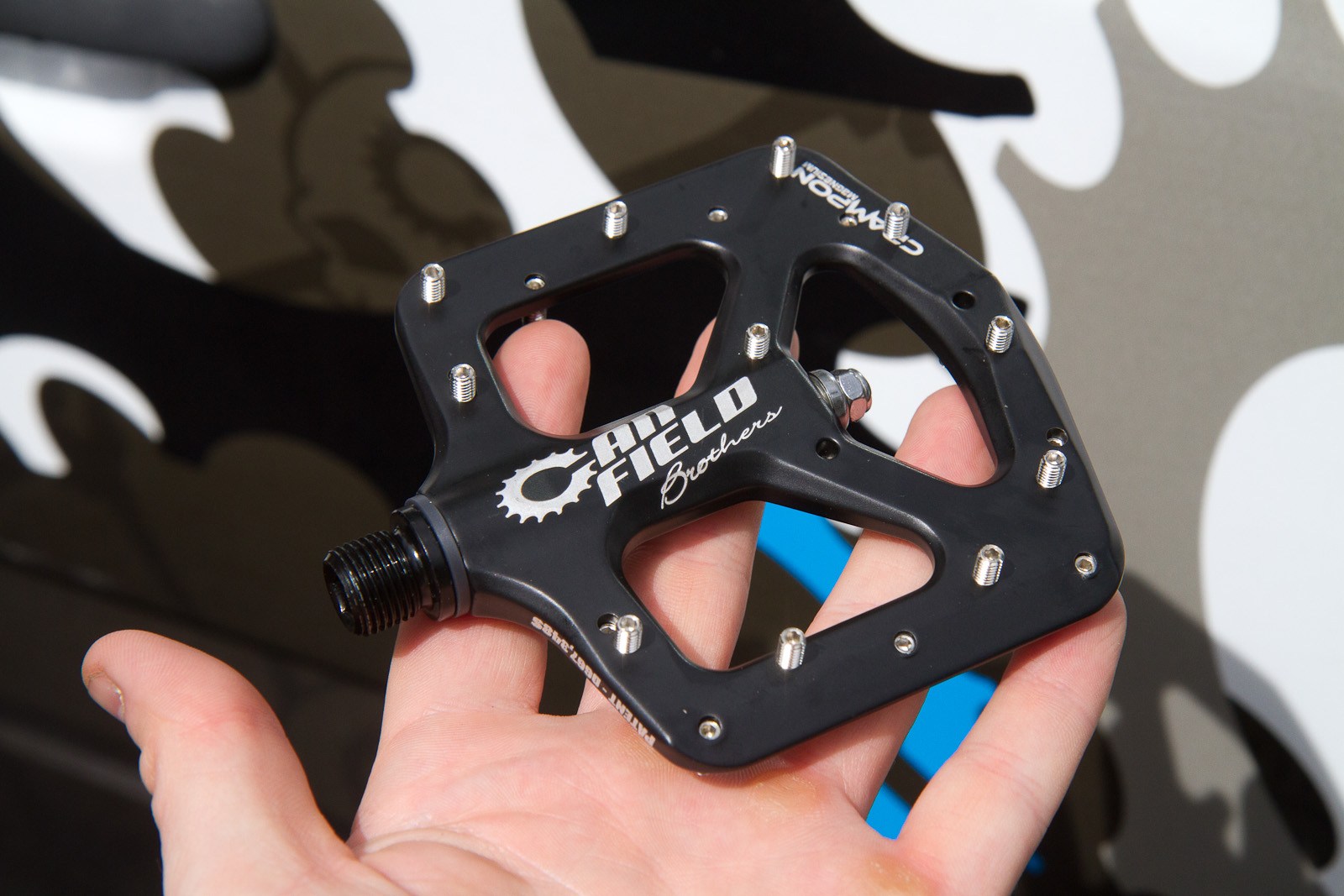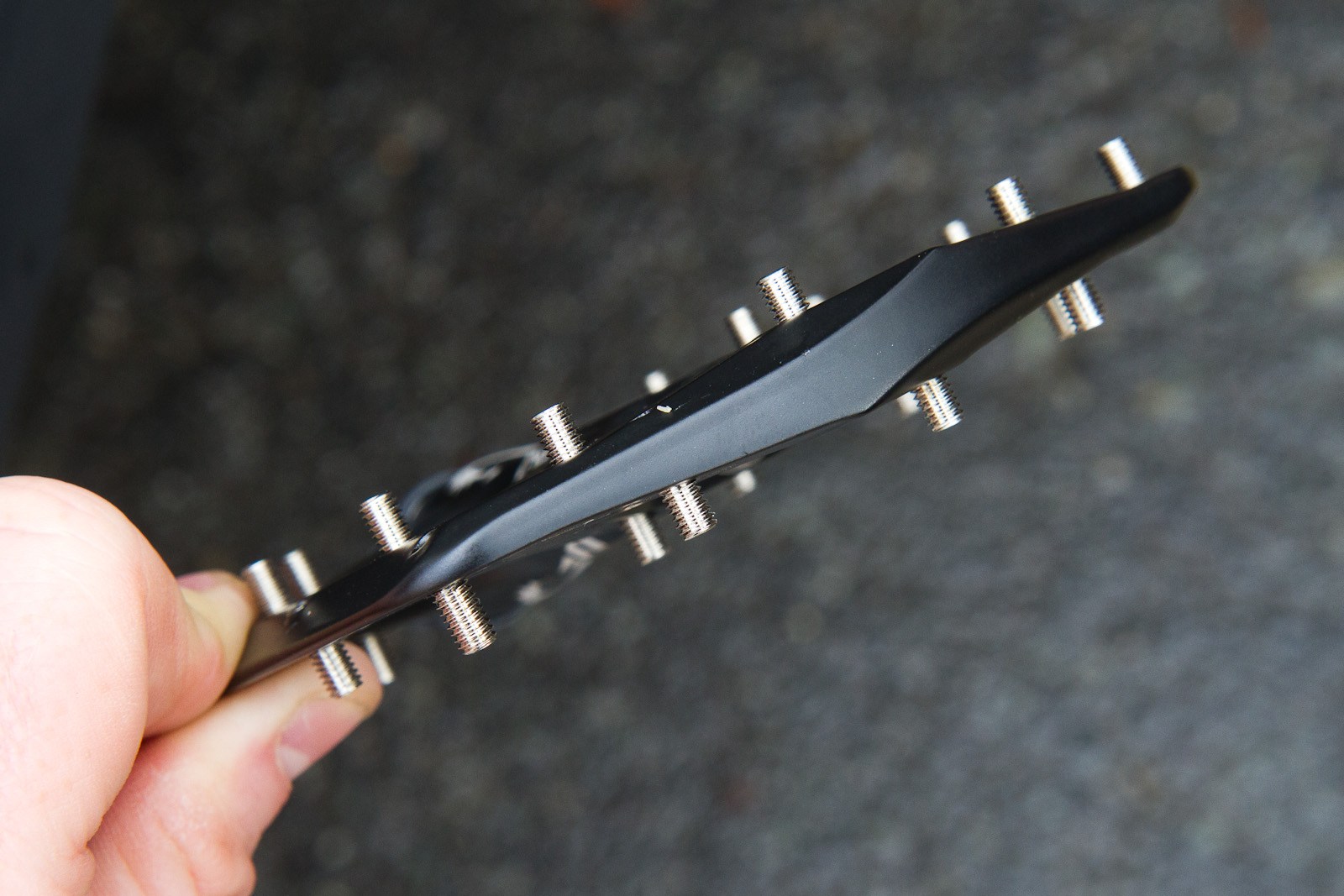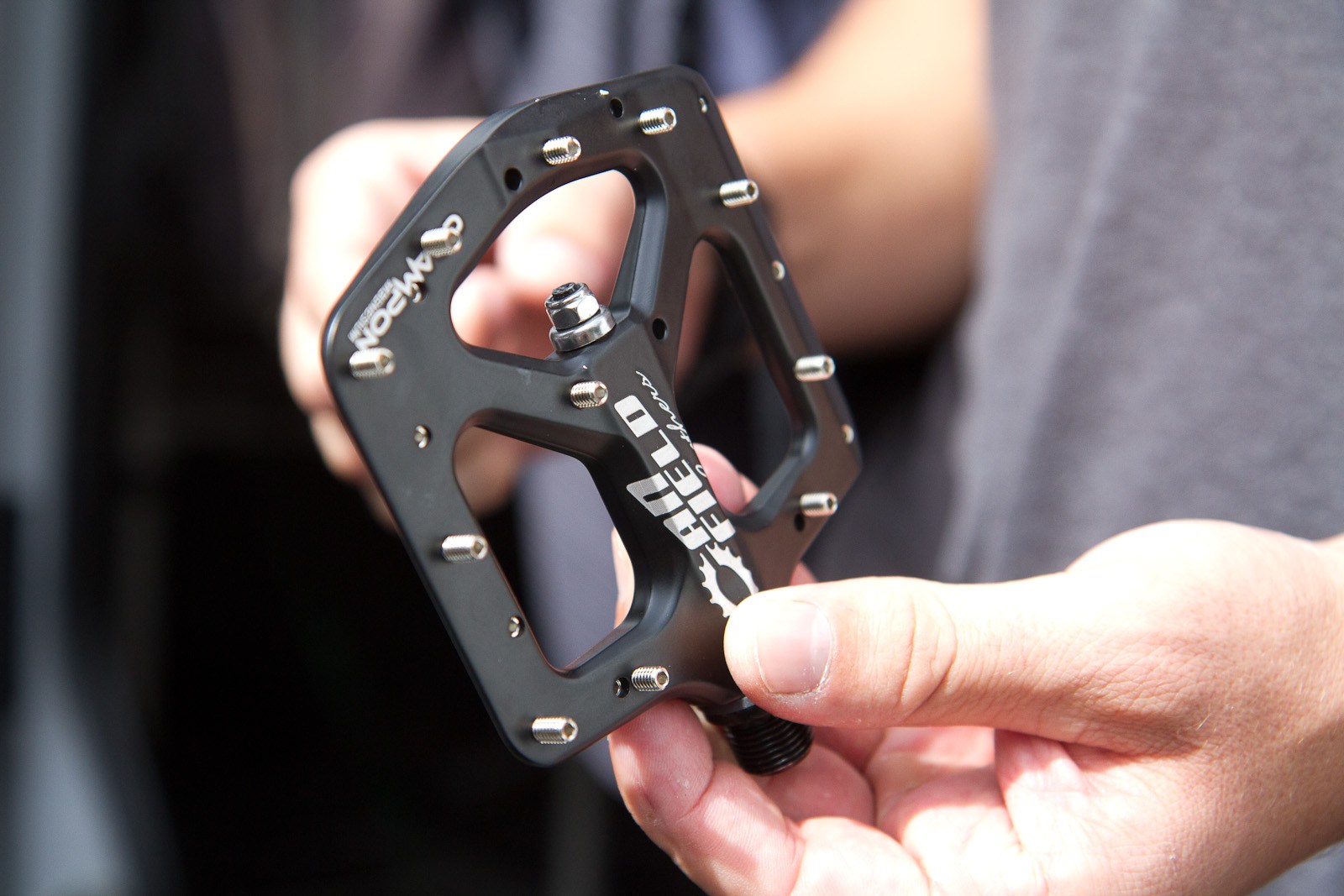
Canfield Bros Crampon Pedals
More often lately I’m the only rider on flats. In the age of enduro and clipped in DH flats may have lost some of their cool but I couldn’t care less; I ride flats on virtually every ride because it’s more fun. If you are similarly inclined you might be interested in a set of these – the latest iteration of Canfield Brothers’ Crampon Magnesium Pedals. They are light, thin and elegantly conceived. The sort of component that makes you smile when affixed to your bicycle. These pedals made me happy before I sunk pins into sticky rubber.

These suckers are feathery at 284 grams a pair (on my scale) and thin like a super model, but they feel and appear burly enough for the rough play.
Still I had a few questions when I first laid eyes on the Crampon Magnesiums. The pedal is unconventional in that it’s narrower at the edges than at the axle. Some pedals are completely flat while others are concave, but few are convex. The conventional wisdom has been that a pedal should cradle your foot. The Canfields eschewed this to make the edges as narrow and light as possible. So you have 6mm at the trailing and leading edge but 10mm at the axle with a gradual slope bridging the gap.
When I first looked at the pedals I expected the pins to be deeper in the middle section so the contact points would be at the same level. Instead the holes for the centre pins are drilled like the others so each pin protrudes approximately 5mm. This means the centre pins are thickest part of the pedal. Chris Canfield presented this as an opportunity for more traction while pedalling at the top and bottom of the stroke.

The Canfield Brothers have a patent pending on their convex shape. A close look reveals that the centre pins are higher than those on the leading and trailing edges.
The pins themselves have Allen fittings on both ends so you can remove them from the underside if they are damaged. The axle turns on DU bushings rather than bearings, another factor that contributes to a wafer-like profile. The pair I have tipped the scale to 142 grams per – or 284 a pair. Effing light. It’s pretty sweet when you can save a quarter of a pound on your pedals.
On Trail
I have only put a few rides on the Crampon Mags but so far I’m impressed. I generally ride Five Ten Impacts (the stickiest sticky shoes) and I often remove pins from pedals to achieve the grip sweet spot. If you have to sit to re-position your foot friction needs to be reduced IMHO. So far I’ve resisted that urge with the Crampon Magnesiums and I think I may keep them that way. Grip = good, but not too robust. The convex shape hasn’t yet proved problematic but I will play with the pins to see how that affects things.

If size matters to you Crampons should please you. I found the platform more than roomy enough for my size 11 Five Tens.
A question that lingers for me is whether the pins are longer than they need to be. A 6mm leading edge isn’t much use if your pins are so long they snag on everything. I am on the hunt for some pins that extend perhaps 2.5mm from the pedal body, which would reduce the overall thickness by 5 mm. Or maybe I’ll take the grinder to the existing pins (taking advantage of the Allen head on the underside) and experiment that way. At that point I’ll either cut the centre pins down even lower or remove them entirely. Another question mark is the DU bushings and their longevity. Thus far they don’t spin freely but some hard rides will change that.

More colours may be in the pipe but for now you can throw down $200 for blue white and black from canfieldbrothers.com. The painted finish looks great and appears to be quite durable. The name is stencilled revealling the magnesium beneath.
So far so good. These questions have a little sand in my shorts but more experimentation will either rinse it out – or embed it uncomfortably. I’ll give a sand update (sans photos) once I’ve completed my experiments and put some more vert on these beauties.







Comments
cam
10 years, 7 months ago
A little update. I'm becoming a believer in the convex design. I had a great ride today using the Crampon Mags (with no mods) and I cleaned a tech climbing move for the very first time. Despite the raised centre pins I didn't notice any high centering on the pedals at all.
Reply
evdog
10 years, 7 months ago
I've had 2 pairs of these, the original and the Ultimates. There was a lot of play in each pair at the DU bushing and they required a lot of maintenance. While thin pedals are nice I don't think these are worth the price. I can get used to thicker pedals again especially with less maintenance and lower cost.
Reply
Bryce
10 years, 7 months ago
So they're convex, expensive, and they run on bushings. Well at least they're thin and light.
Reply
SlipKoRn
10 years, 7 months ago
Nice pedals, but expensive. I own Grade5 Type-1 pedals with sealed aluminium body, titanium axle and four replaceable bearings. Each pedal have 20 replaceable aluminium pins. Grip feels more than enough. Price: 99,95€ ($133,00)
Reply
Dirk
10 years, 7 months ago
A patent pending on the convex design? Seriously? They're not serious, are they? Somebody, somewhere has built a convex pedal before. There is no way this will stand up to prior art. And why would you patent something like that anyhow?
Reply
RNAYEL
10 years, 7 months ago
It's trendy and forward looking to say that your design is patent pending.
Reply
Rob Gretchen
10 years, 7 months ago
I've had the aluminum version of the Ultimates and while they are thin and a decent platform its the axle and bushing design that I found sub-par. These are made by HT pedals and use the same basic design. They will never spin as well as a bearing design and will need constant maintenance if you ride in wet conditions. And some lateral play will generally always be present in the system due to the bushing design. You can generally live with these but since I moved to the new Hope platforms I've seen how good an axle can be designed to not need much maintenance.
Reply
Please log in to leave a comment.